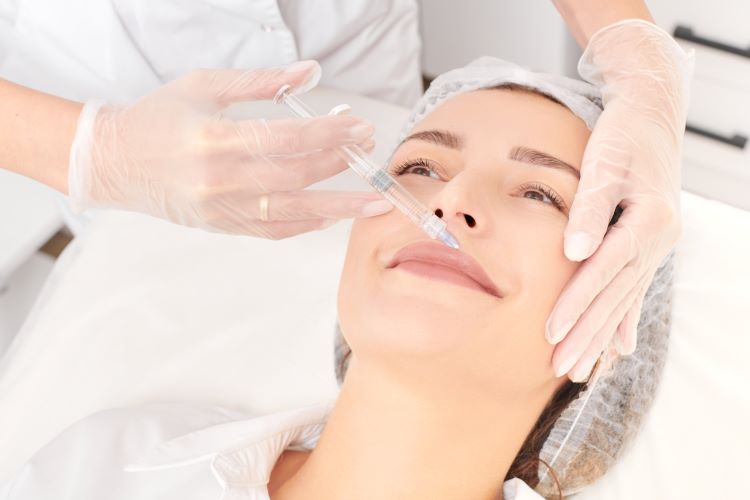Emerging Treatments for Alopecia: What to Know About the Latest Solutions
Researchers and clinicians are exploring a range of innovative approaches to help manage alopecia beyond traditional options. This guide reviews five emerging therapies — from PRP and JAK inhibitors to microneedling and microbiome-based methods — that offer evolving perspectives in scalp health and hair regeneration. Understanding how these treatments work, what they aim to support, and where they're being studied can provide new perspectives on how the future of hair loss care is taking shape.

What is PRP hair treatment and how does it work?
Platelet-rich plasma (PRP) hair treatment is an innovative approach that harnesses the body’s natural healing abilities to stimulate hair growth. The process involves drawing a small amount of the patient’s blood, processing it to concentrate the platelets, and then injecting this platelet-rich plasma into the scalp. These platelets contain growth factors that can promote tissue regeneration and stimulate dormant hair follicles.
PRP treatment is typically administered in a series of sessions over several months. While results can vary, many patients report increased hair density and thickness. This treatment is particularly promising for those with androgenetic alopecia, also known as male or female pattern baldness.
How are JAK inhibitors revolutionizing alopecia treatment?
Janus kinase (JAK) inhibitors represent a groundbreaking development in the treatment of alopecia, especially for those with severe forms like alopecia areata. These oral medications work by blocking specific enzymes involved in the immune response that leads to hair loss. By modulating the immune system, JAK inhibitors can potentially reverse hair loss and promote regrowth.
Clinical trials have shown impressive results, with some patients experiencing significant hair regrowth after months of treatment. While JAK inhibitors are still being studied and are not yet widely available for all types of alopecia, they offer a promising future for those with autoimmune-related hair loss conditions.
Can microneedling effectively stimulate hair growth?
Microneedling for hair growth is a minimally invasive procedure that involves using a device with tiny needles to create controlled micro-injuries in the scalp. This process stimulates the production of growth factors and increases blood flow to hair follicles, potentially encouraging hair regrowth.
Often combined with topical treatments like minoxidil, microneedling has shown promising results in several studies. Patients typically undergo multiple sessions over several months, and many report improved hair density and thickness. This treatment is particularly appealing due to its relatively low cost and minimal side effects compared to more invasive options.
What role does laser therapy play in combating hair loss?
Laser therapy for hair loss, also known as low-level laser therapy (LLLT) or photobiomodulation, uses red light wavelengths to stimulate hair follicles. This non-invasive treatment can be administered through various devices, including handheld combs, caps, or in-office machines.
The light energy is thought to increase blood flow to the scalp and stimulate metabolism in catagen or telogen follicles, potentially resulting in thicker, fuller hair. While more research is needed to fully understand its long-term efficacy, many patients report positive results, especially when combined with other hair loss treatments.
Are there any emerging microbiome-based treatments for alopecia?
Recent research has highlighted the importance of the scalp microbiome in hair health. Scientists are exploring how the balance of microorganisms on the scalp may influence hair growth and loss. This has led to the development of microbiome-based treatments that aim to restore a healthy scalp ecosystem.
These treatments may include topical probiotics, prebiotics, or other compounds designed to nurture beneficial microorganisms on the scalp. While still in early stages, this approach offers a novel perspective on hair loss treatment and may lead to more personalized solutions in the future.
What should patients consider when exploring new alopecia treatments?
When considering emerging treatments for alopecia, it’s crucial for patients to approach the decision with caution and informed expectations. Here are some key factors to consider:
-
Consult with a dermatologist or trichologist to determine the most appropriate treatment based on the type and severity of hair loss.
-
Understand that results can vary significantly between individuals and may take several months to become noticeable.
-
Be aware of potential side effects and contraindications, especially for more intensive treatments like JAK inhibitors.
-
Consider the long-term commitment required for many of these treatments, as stopping them may result in reversal of gains.
-
Evaluate the cost implications, as many emerging treatments may not be covered by insurance.
| Treatment | Estimated Cost Range | Treatment Duration | Typical Frequency |
|---|---|---|---|
| PRP Therapy | $500 - $2,000 per session | 3-6 months | Monthly sessions |
| JAK Inhibitors | $1,000 - $3,000 per month | Ongoing | Daily oral medication |
| Microneedling | $200 - $700 per session | 3-6 months | Every 4-6 weeks |
| Laser Therapy | $200 - $1,000 for at-home device | 6-12 months | 2-3 times per week |
Prices, rates, or cost estimates mentioned in this article are based on the latest available information but may change over time. Independent research is advised before making financial decisions.
In conclusion, the landscape of alopecia treatment is rapidly evolving, offering new hope for those struggling with hair loss. From PRP and JAK inhibitors to microneedling and laser therapy, these emerging treatments provide a range of options for patients to explore. As research continues, we can expect even more innovative solutions to address the complex challenge of hair loss. Patients should work closely with healthcare professionals to determine the most suitable approach for their individual needs and to stay informed about the latest advancements in this field.
This article is for informational purposes only and should not be considered medical advice. Please consult a qualified healthcare professional for personalized guidance and treatment.




